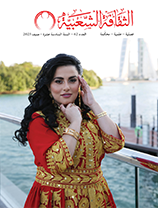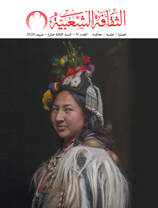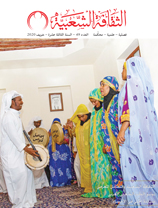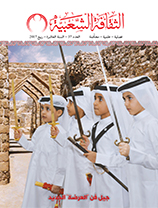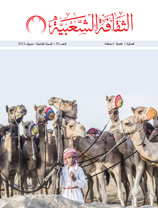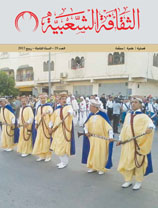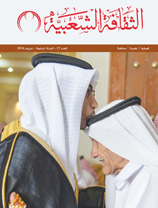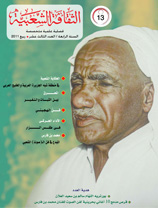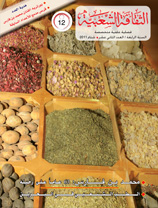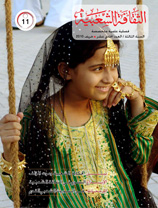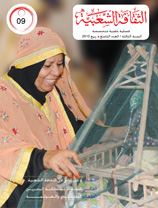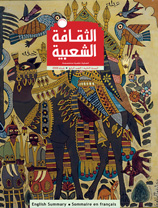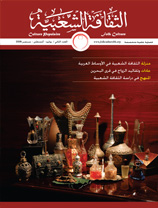A study of the narrative semantics of fairytales: Al Jan’ada fairytale as an example
Issue 26

Al Jan’ada is a fairytale from Saudi Arabia. It is the story of a poor, lonely fisherman who received the gift of a box of fish. One of the fish turned into a pretty girl who served the fisherman without his knowledge. After the poor fisherman learned of the girl’s existence, he loved her and treated her as his daughter. He warned her to be wary of a witch who lived in the area.

While the pretty girl was sewing one day, the wind blew away a handkerchief. When the girl ran after the handkerchief, the witch noticed her and cast a spell on her. The spell made the pretty girl sleep during the day and stay awake the whole night. The fisherman was so sad that he built the pretty girl a tomb of sugar.
One day, while the King was visiting the area, he noticed his horse eating the tomb of sugar. He discovered the pretty girl, and learned of the witch’s spell.
The King married the witch and they had a son. When the boy was three years old, the King and his son grabbed the handkerchief from the witch’s bosom, breaking the spell. The King invited the witch to a banquet, where, under the pretence of offering her some mutton, he threw her into a pot of boiling water. The witch died, and the people of the area lived happily after.
Al Jan’ada is classified as a fairytale because its structure differs from that of folktales and other tales. Al Jan’ada’s structure is more literary and reminiscent of the world of fiction and dreams, which dominate the structure of fairytales. The fairytale’s elements are also harmonious.
The fairytale, in all its many forms, is regarded as a literary form, while the folktale includes elements of reality and has no purely literary aspect. Some books of criticism classify both folktales and fairytales as fairytales. Others refer to stories about genies as fairytales without scrutinising the functions of the real or fictitious characters. Other references add animal characters to fairytales. This study cites sources that treat fairytales and folktales as the same thing, and sources that agree with this study’s premise.
This study’s analysis of Al Jan’ada fairytale looks at it as a literary text with a well-established structure; the fairytale is a literary genre with all literary characteristics and harmony between the elements and the text. This harmony is essential to a fairytale, even if the harmony is unclear because of the dominance of the fictional components and events.
Given that the literary form is structurally harmonious, we need to assume that the meaning of each element cannot be separated from the other elements and stand alone. According to this definition, the fairytale is a literary genre with its own peculiarity, its parts are arranged in accordance with an internal chronological context. The structural content has a special form in which the social and intellectual elements interact with each other..
Entisar Qa’id Al Binna
Bahrain





